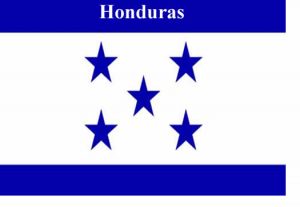 The Honduran constitution guarantees free primary education for all citizens; as of 2010, the adult literacy rate was 91%. School for children ages 6-12 has long been compulsory; in 2012 a new law mandated free, universal and compulsory secondary education and implemented reforms designed to improve access to education for the country’s rural students.
The Honduran constitution guarantees free primary education for all citizens; as of 2010, the adult literacy rate was 91%. School for children ages 6-12 has long been compulsory; in 2012 a new law mandated free, universal and compulsory secondary education and implemented reforms designed to improve access to education for the country’s rural students.
Primary education begins at age 5, when children attend kindergarten, also known as grado cero. Its objectives include developing pupils’ curiosity, motor and social skills, cooperation, and creativity. Primary students are divided into three cycles: grades K-3, 4-6, and 7-9. Beginning at age 12, students may choose either an academic or professional/technical educational path.
The goal of secondary education is to provide students with fundamental competencies which will prepare them for higher education or the workforce. As in other Central American nations, including El Salvador, students completing secondary school earn the distinction of bachiller.
Secondary school students are graded as follows:
| Scale | Numerical | Grade Description |
|---|---|---|
| 91-100 | 5 | Sobresaliente (Outstanding) |
| 80-90 | 4 | Muy Bueno (Very Good) |
| 60-79 | 3 | Bueno (Good) |
| 0-59 | 2 | Reprobado/No Satisfactorio (Fail) |
The following chart depicts the post-secondary grading scale:
| Scale | Grade Description | U.S. Grade Equiv. |
|---|---|---|
| 95-100 | Excellente | 4.00/A |
| 85-94 | Muy Bueno (Very Good) | 3.00/B |
| 70-84 | Bueno (Good) | 2.00/C |
| 0-59 | Reprobado/No Satisfactorio (Fail) | F |
Primary school curriculum consists of Spanish, literature, science (including health classes), social studies, mathematics, art, agriculture, home economics (for girls), and physical education. Students in grades 7, 8, and 9 also study civics and English. Secondary schools offer courses in language and literature, foreign language, social studies, social and natural sciences, fine arts, music, civics, and mathematics.
Secondary-level students also spend time in practical or life-skills classes. Tenth and eleventh-graders may choose a general education or work-study focus. Depending on whether students pursue an academic or technical track they will spend more time in classes relating to their particular areas of interest: candidates for a bachillerato en ciencias y letras study philosophy, chemistry and psychology, while students pursuing a technical bachillerato may take classes in technical drawing, metal work, or carpentry.
Honduras is home to several public and private universities, with the Universidad Nacional Autonoma enrolling around 80,000 students. Most are located in Tegucigalpa, which also hosts a number of polytechnic institutes. Recent initiatives and public/private partnerships aim to improve access to higher education for Honduras’ economically disadvantaged students.